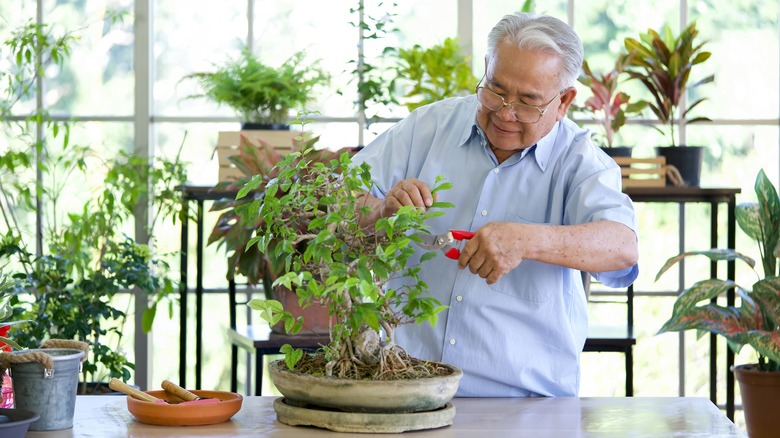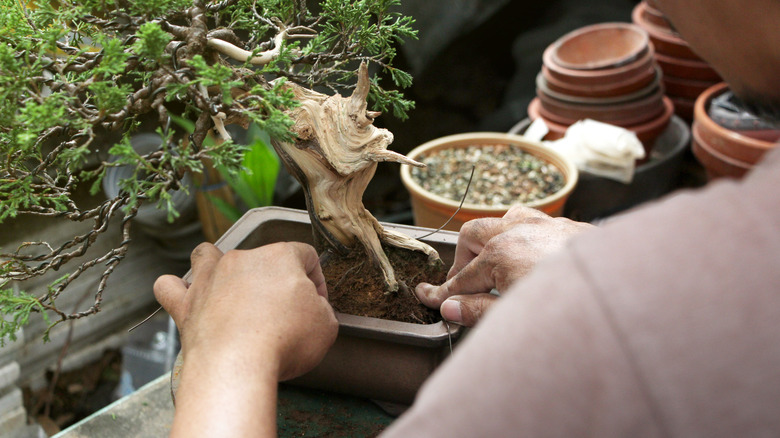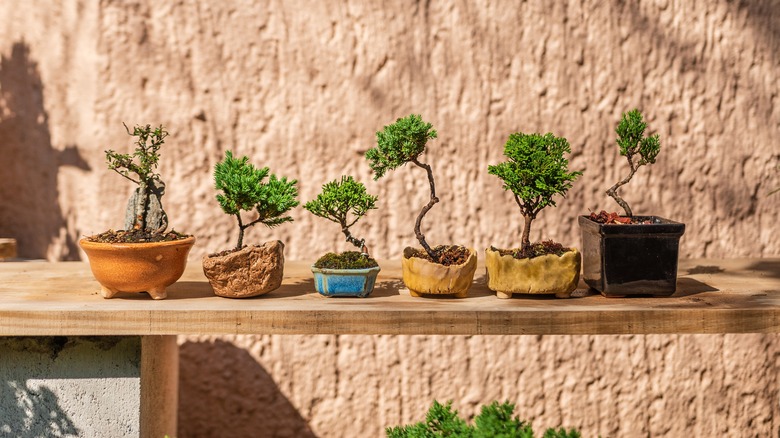The Best Type Of Pot For A Happy And Healthy Bonsai Tree
Bonsai trees are remarkable in their longevity, easily living for several decades, and many even surpassing the century mark. Despite their small size, these miniature trees possess great strength and visual impact — provided they receive the necessary care, of course. The term "bonsai" originates from Japan, where it translates to "planted in a container." However, not all containers prove suitable for sustaining the plant's vitality and well-being. The choice of container plays a critical role in ensuring the bonsai's survival and allows it to thrive. And keeping a bonsai tree in a shallow pot is best suited for nurturing its health and ensuring long-term flourishing.
The prices of bonsai trees can vary greatly, ranging from a few dollars for smaller, common varieties to tens of thousands of dollars for larger, rare specimens. Interestingly, the quality of the pot in which a bonsai is planted can also influence its price. While there are inexpensive manufacturers who mass-produce bonsai pots, these tend to be of lower quality. Conversely, renowned pot makers may have a higher price tag but often offer the necessary features to support a thriving and contented tree. These features include proper depth, effective drainage, and an aesthetically pleasing design that complements the overall composition of the bonsai.
Depth and drainage
A shallow pot is ideal for the roots and branches of a bonsai tree. Placing a bonsai tree in a smaller container restricts the spread of its roots and limits its capacity to absorb water and nutrients. This intentional confinement contributes to controlling the size of the tree, ensuring it remains petite and compact. It's important to select a pot that's not deeper than the width of the tree trunk at the soil level. This ensures optimal growth and development for the bonsai.
Watering your bonsai regularly is important, but water logging can be detrimental. Therefore, every bonsai pot must have proper drainage holes at the bottom. This prevents the accumulation of excess moisture around the roots, which can lead to rot. Although most containers come with at least one hole, opting for a pot equipped with two to four holes or drilling your own to improve aeration and overall root health is often suggested. By prioritizing proper drainage in a shallow pot, bonsai enthusiasts can help maintain a healthy and thriving tree.
Masculine or feminine
In addition to functionality, the aesthetics of a bonsai pot are highly regarded, and many believe the appearance of the pot should harmonize with the tree it contains. When choosing a specific pot type, you can select between a masculine or feminine style. These design choices can contribute to the overall visual appeal and balance its composition.
For a masculine bonsai tree with a thick trunk, dense branches, sharp angles, and deadwood, an appropriate pot would be square or rectangular with clean lines. It should have minimal or no embellishments or glaze and stout feet. Masculine pots are also generally available in brown, gray, or earthy tones. On the other hand, a feminine bonsai tree possesses rounded silhouettes, sparser branches, smooth bark, thin trunks, and beautiful flowers. To complement these delicate features, a suitable container for a feminine bonsai tree starkly contrasts its masculine counterpart. An ideal pot would be a round or oval shape, embellished with decorative designs and featuring tapered feet. These pots often come in soft, uplifting colors like pastels. By selecting the best container for your bonsai tree, you can enhance its beauty and create a harmonious composition that truly showcases its elegance and grace for years to come.


